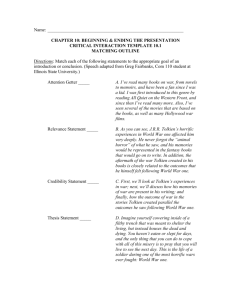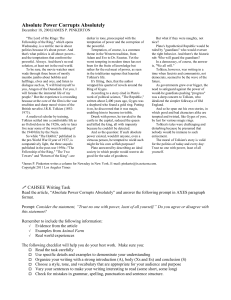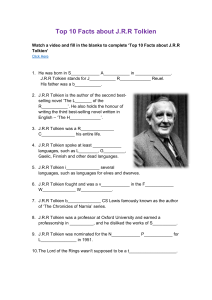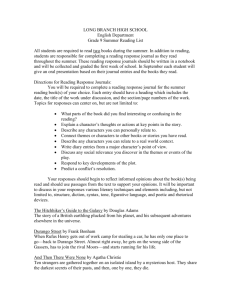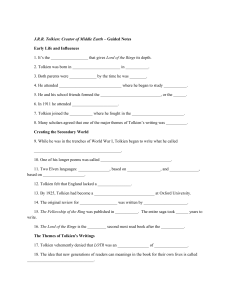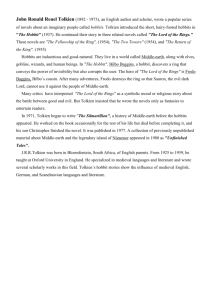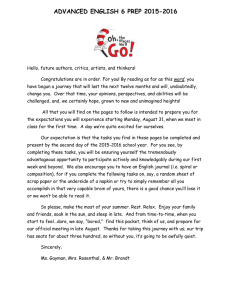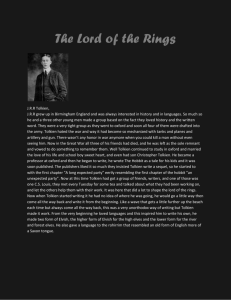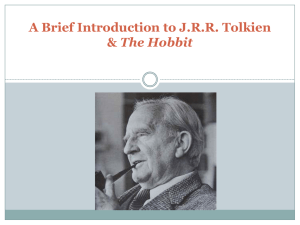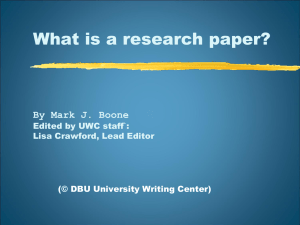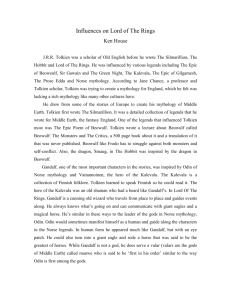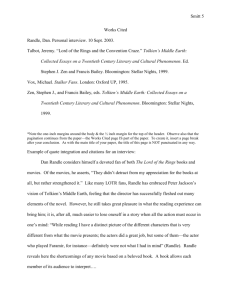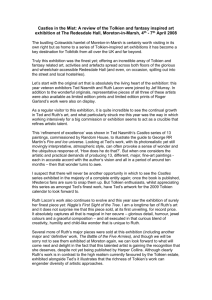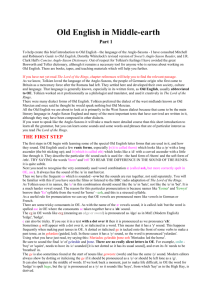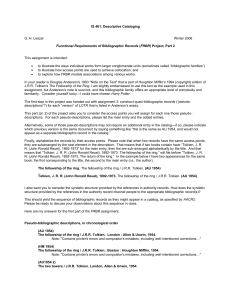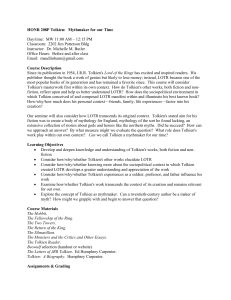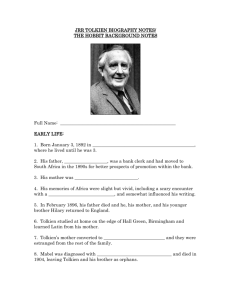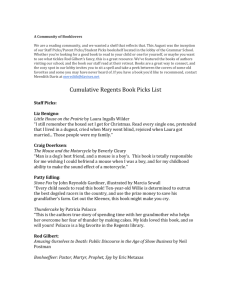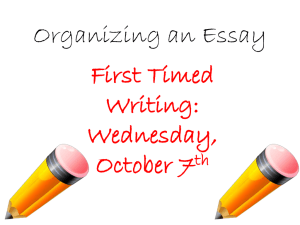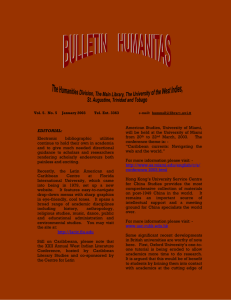Writing A Research Essay - Mrs.Cordeiro`s Web Page
advertisement
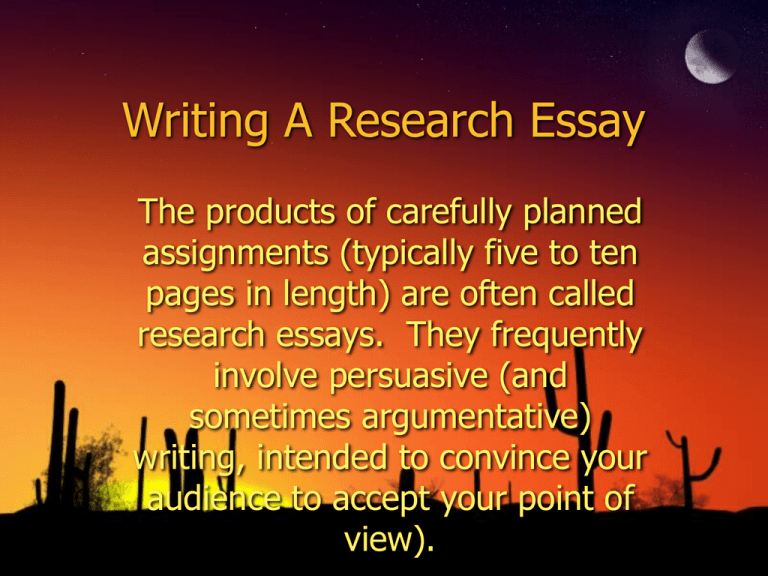
Writing A Research Essay The products of carefully planned assignments (typically five to ten pages in length) are often called research essays. They frequently involve persuasive (and sometimes argumentative) writing, intended to convince your audience to accept your point of view). Stages in Writing a Research Essay Stage 1: Choosing and Limiting your Topic ◊ Think about what you are interested and what you would like to learn about. Try to do this early in the research stage to save you wasting time later. ◊ Don’t bite off more than you can chew (a colloquialism… ). Decide if your ambitions are do-able in the time alloted. ◊ Try to pick information that can make it interesting to your audience. If it is intersting, it is usually fairly convincing. Stage 1 Cont’d Consider and formulate some research questions you want to address in the essay. You should also answer the following questions… 1. What do I know about this topic? 2. What else do I need to know? 3. What do I want my audience to learn from my research? ◊ For example, you may make a thought web like this… Genre of the Novel Fantasy Novels Novels of J.R.R. Tolkien Reasons for the success and popularity of “The Lord of the Rings” by J.R.R. Tolkien. Stage 2: Making a Tentative Thesis Statement ◊ An effective thesis should take a POSITION on your paper that you believe your research will prove. ◊ It is a single sentence that formulates both the central idea of your research and your point of view on the topic. ◊ In a sense, the thesis is your answer to the central question or problem you have raised. Sample Working Thesis: It is the combined effect of the use of language, the presence of a wide variety of poetry and song, the elements of heroism, and even aspects of Tolkien’s own character that contribute to the legendary status of The Lord of the Rings. Stage Three: Retrieving Sources of Information ◊ It is important that the primary voice in your paper is your own, however you need to have resources that effectively substantiate your claims. ◊ As you conduct your research, take notes to reconstruct the information. Types of Resources Primary Sources ◊ First-hand Observations: -discussion -observation -interviews -questionnaires Secondary Sources ◊ Library Catalogues and Computer Files ◊ Periodical Indexes ◊ Non-Print Resources ◊ Electronic Libraries Stage 4: Making a Tentative Outline ◊ Place the information you have found in order by creating an draft outline. ◊ As your research develops and grows, so will your outline. Do not be afraid to make changes to your work. ◊ A well-written outline gives your essay form and direction. It is essentially the hard part, and a substantial amount of time should be dedicated to this step and process. ◊ Ex/ ◊ ◊ ◊ ◊ ◊ Introduction: A. The success and popularity of the trilogy TLOTR B. Combined reasons for Tolkien’s greatness Par. 1: Tolkien’s effective use of descriptive language A. Vivid imager to set the story’s scenes B. Vivid imagery to describe characters C. Vivid imagery to establish mood Par. 2: Tolkien’s scheme of languages (speech) A. The Hobbits’ speech B. The Orcs’ speech C. The Elvish speech Par. 3: Tolkien’s use of poetry and song A. Heightening atmosphere and mood B. Revealing aspects of character’s personality C. Supplying background information Par. 4: Tolkien’s heroic, courages characters A. The ranger, Aragorn B. Eomer, Marshall of the Mark C. Gil-galad Conclusion: Through careful analysis, however, one can see that it was not only one of these factors, but rather a combination of all of them that has helped ensure the success and popularity of TLOTR. Stage 5: Reading and Organizing Notes ◊ Evaluate your own research, as you progress, in terms of accuracy, currency, and usefulness. ◊ Ensure you are keeping jot-notes of your information to assist you in integrating that information into your paper. ◊ Organize your citations in advance so you are not looking for them at the end of your essay. Stage 6: Writing the First Draft ◊ As you write, make sure that you are incorporating parenthetical references or embedded citations. ◊ Use MLA format in your writing format and citations. ◊ If you find new material as you are writing, you need to be prepared to review your rough outline to incorporate that information in an organized and effective manner. Stage 7: Revising and Editing ◊ Things to consider: Are my purpose and main idea clear? Is my thesis statement fully developed? Is the content of the report complete? Does it follow the order presented in my outline? Is each topic sentence supported by detailed facts? Do my language and content suit my audience? Are my title and introductory paragraph(s) interesting? Is there a strong ending? Have I defined all important terms? Have I adequately answered my research questions? Is my paper free of errors in punctuation, grammar, and usage? How can I improve in my next research project? Stage 8: Publishing or Presenting the Final Draft ◊ Type assignments whenever possible ◊ Double check the format ◊ Give it a once-over to check for any last-minute errors Stage 9: Preparing References ◊ ◊ ◊ ◊ ◊ On a separate sheet of paper MLA Format Works Cited Last page of essay Alphabetical Order
